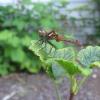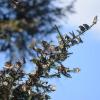As the anniversary of the March for Science approaches, we reflect on ways science has informed our conservation efforts over the past year.
The Xerces Society has become well-known for our publications, our trainings, and the acres of habitat we’ve worked to protect and restore. What is often less visible is the scientific work our staff are engaged in that underpins these efforts. More than two-thirds of our staff are scientists with diverse backgrounds and expertise who conduct research and surveys, create models and community science projects, and otherwise employ science-based approaches that inform and expand our conservation efforts. Here are a few recent examples of how this work is shaping our approach to invertebrate conservation.
Assessing Potential Impacts of Climate Change
In the recently published Encyclopedia of the Anthropocene, Vol. 2, Xerces Executive Director Scott Hoffman Black contributed a chapter identifying insect “winners and losers” in response to changing climate. Drawing upon current research, Scott reveals how increasing temperatures may lead to the expansion of some insect populations and contraction of others. For example, damaging insect herbivores in forest ecosystems may benefit from milder winters and longer growing seasons to greatly expand their reproduction and range.
On the losing end, research is increasingly showing that bumble bees and other floral visitors may see contraction at the southern end of their native ranges, while being unable to expand northward. Research shows that bumble bees and butterflies are far more prone to local and regional extinction than other bees and hoverflies, which means not all pollinators will fare equally in a changing climate.
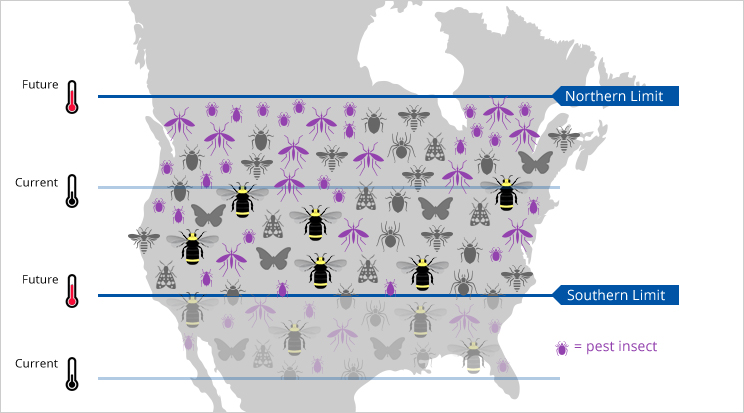
Further, as climatic changes throw the timing of flowers and crops out of sync with pollinators' life-cycle needs, pollinators may be unable to find the food they need when they need it most. While this news may seem grim, it is essential for understanding where to direct conservation efforts and where habitat may be best positioned to provide resources for shifting populations.
Mussels and Monarchs in the West
Biologists from our endangered species conservation team published first-of-their-kind surveys concerning populations of monarch butterflies and freshwater mussels in the western United States in late 2017 and 2018, respectively. These peer-reviewed studies engaged disparate partners, pulling together data from across several decades and multiple sources to create a clearer picture of long-term population trends. This work demonstrates the ability of our organization to act as arbiter where trends suggest population declines. And in making the scientifically sound case that populations are in decline, this work also allows us to assess the steps needed to achieve recovery. In conjunction with the release of these assessments, our staff produced guidelines and best management practices to help land managers and conservationists begin the work necessary to recover these species and limit further decline. Additional conservation resources for both species are coming soon.
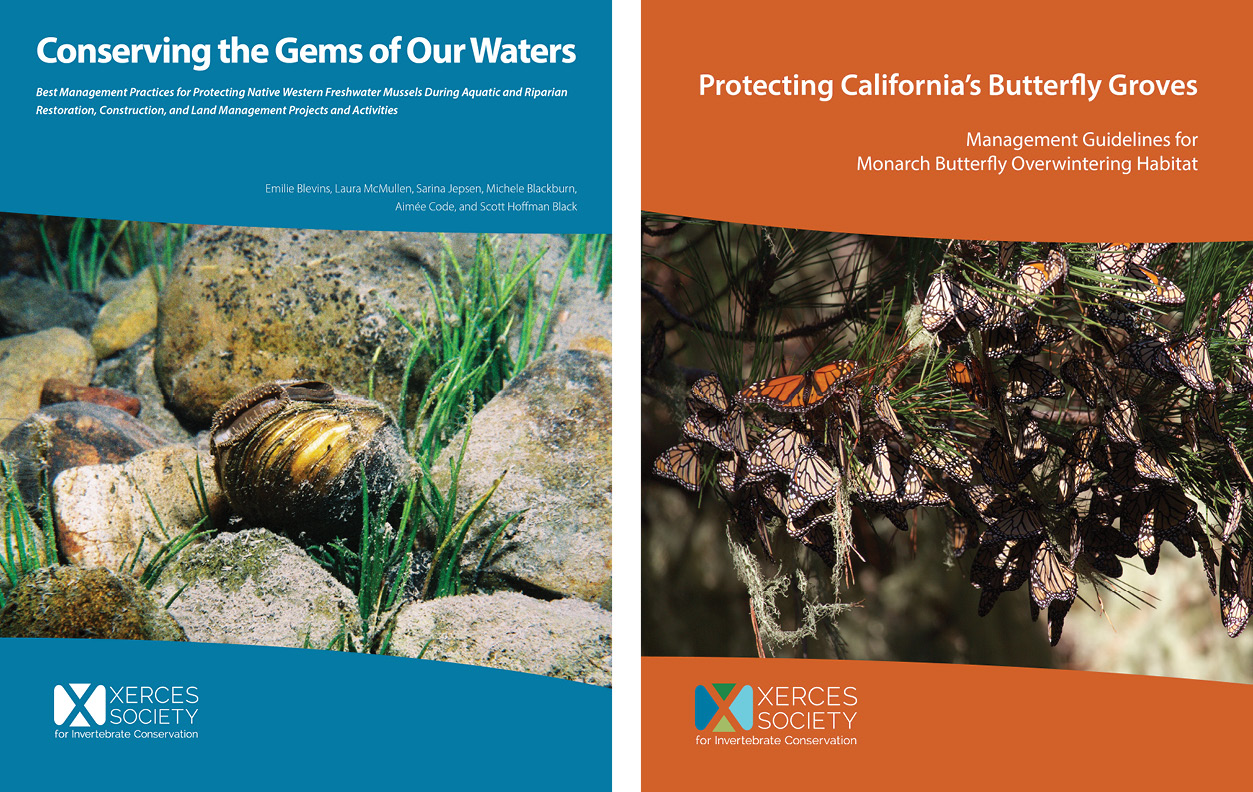
Assessing Habitat for Sensitive Butterflies
Private lands provide critical opportunities to establish habitat for at-risk species. The Xerces Society has been a leader in developing best practices for establishing habitat on farms and other working lands, but also, just as importantly, assessing the efficacy and impact this habitat is having on pollinators. Pollinator Program Co-Director Eric Lee-Mäder recently coauthored a study (the first of its kind) that evaluates habitat created to recover the endangered Karner blue butterfly in Wisconsin through State Acres for Wildlife Enhancement, a special initiative of the USDA Conservation Reserve Program. This paper, and the research it summarizes, highlights the results of the first, largest, and only example to date of a USDA farm conservation program specifically targeting a federally endangered insect—and the research reveals that this program is working!
The results of this program are impressive given the odds stacked against these butterflies. The challenges are great when attempting to recover endangered butterflies on lands where they are already present. To re-create areas of habitat on retired agricultural lands and to have a small, relatively nonmobile butterflies colonize those restored areas is unprecedented. Where we are seeing small populations of Karner blues on these lands, the butterflies may have traveled for miles over intensively farmed fields, across highways, over water, through yards, and around other obstacles to find these new habitats.
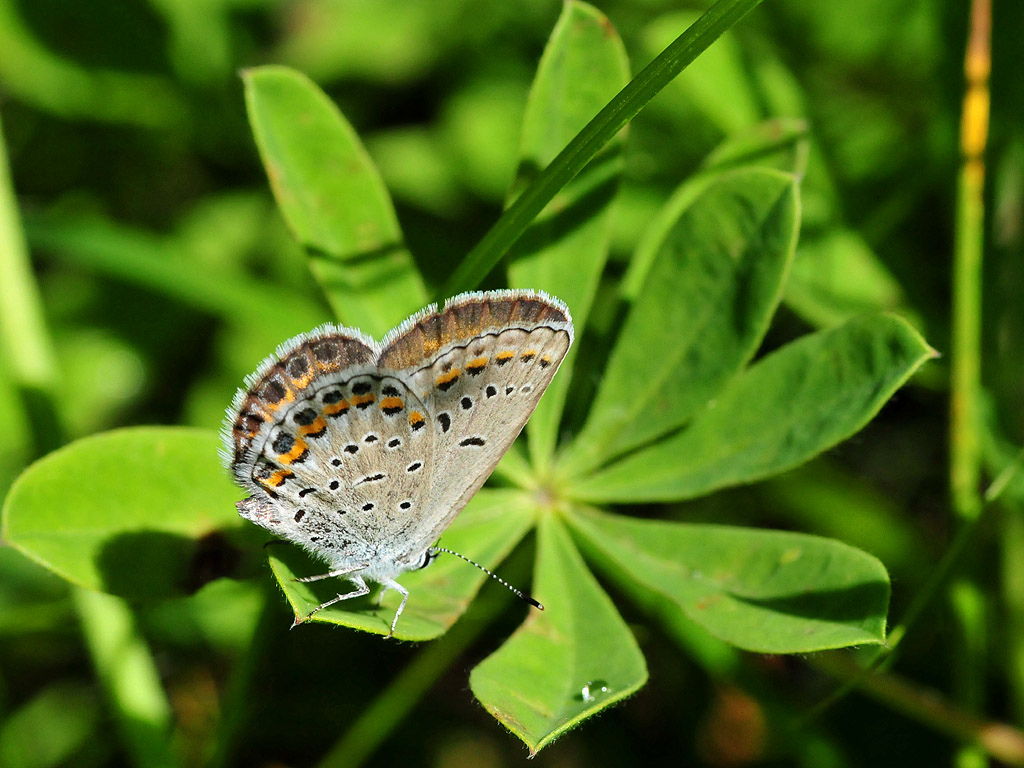
While the results of this study are encouraging, they represent a small sample. Overall, we don't know whether the majority of sites will ever become colonized by the butterfly. However, it does give us a reason to hope.
The paper further highlights the significant learning curve in habitat restoration for this species and how a lot of early sites were not well planned or planted. Support from Xerces staff and Dr. Paula Kleintjes Neff of University of Wisconsin–Eau Claire ultimately helped the USDA fine-tune recommendations to later enrollees, and the habitats continue to improve. All of this history has special value to Xerces as a "proof of concept" we may draw upon to make the case for similar programs targeting at-risk species, such as the rusty patch bumble bee (Bombus affinis).
Speaking of Bumble Bees…
The data collected by the community science effort Bumble Bee Watch continues to provide value to bumble bee conservationists and unexpected surprises. Observations submitted to Bumble Bee Watch are showing an expansion of the previously documented range of the two-spotted bumble bee (B. bimaculatus). The observations clearly document an expansion at the northern range of the species in the maritime Northwest, an expanded presence in Quebec, and new observations in eastern provinces of Canada. It is not yet clear if this species has recently expanded its range, or if the new observations are due to an increase in survey efforts—aided by this community science effort.
In another example of how this project is contributing to bumble bee conservation, observations submitted to Bumble Bee Watch were used in expert testimony to push for greater regulation of commercially bred bumble bees. The common eastern bumble bee (B. impatiens), used as a pollinator in commercial greenhouses, was documented far outside its native range, with clusters appearing in the Vancouver, BC, area of the Pacific Northwest. One such observation documented a mating queen within a short distance of commercial greenhouses.
Commercially bred bumble bees have been identified as a possible vector for disease spread. Commercially bred bees frequently escape captivity, enabling the spread of disease to wild populations, which may be a leading factor in the decline of a number of at-risk bumble bee species. Data collected through Bumble Bee Watch is clearly documenting appearances of managed bumble bees in areas far outside of their native ranges, where disease transmission to wild bees is a possibility.
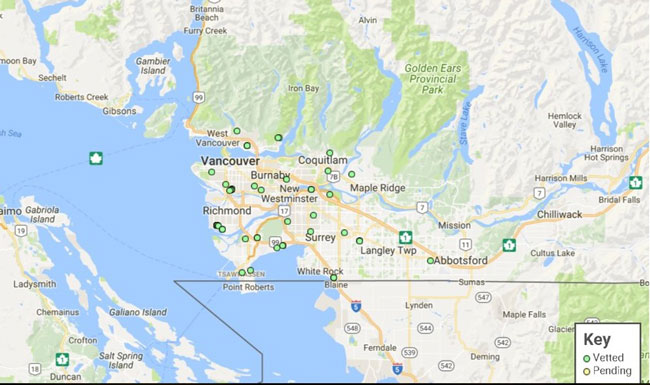
These are just a few examples of the work our staff is engaged in to provide the strong scientific research and analysis that underpins our conservation efforts. As always, this work is made possible through your support, which allows us to conduct the science-based work that leads to meaningful outcomes. Thank you!
Further Reading
Learn more about our Endangered Species Conservation Program.
Read more about climate change on the blog.


